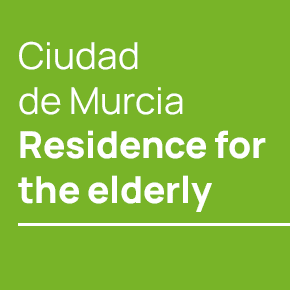- Region
- Águilas
- Alhama de Murcia
- Jumilla
- Lorca
- Los Alcázares
- Mazarrón
- San Javier
-
ALL AREAS & TOWNS
- AREAS
- SOUTH WEST
- MAR MENOR
- MURCIA CITY & CENTRAL
- NORTH & NORTH WEST
- TOWNS
- Abanilla
- Abarán
- Aguilas
- Alamillo
- Alcantarilla
- Aledo
- Alhama de Murcia
- Archena
- Balsicas
- Blanca
- Bolnuevo
- Bullas
- Cañadas del Romero
- Cabo de Palos
- Calasparra
- Camping Bolnuevo
- Campo De Ricote
- Camposol
- Canada De La Lena
- Caravaca de la Cruz
- Cartagena
- Cehegin
- Ceuti
- Cieza
- Condado de Alhama
- Corvera
- Costa Cálida
- Cuevas De Almanzora
- Cuevas de Reyllo
- El Carmoli
- El Mojon
- El Molino (Puerto Lumbreras)
- El Pareton / Cantareros
- El Raso
- El Valle Golf Resort
- Fortuna
- Fuente Alamo
- Hacienda del Alamo Golf Resort
- Hacienda Riquelme Golf Resort
- Isla Plana
- Islas Menores & Mar de Cristal
- Jumilla
- La Azohia
- La Charca
- La Manga Club
- La Manga del Mar Menor
- La Pinilla
- La Puebla
- La Torre
- La Torre Golf Resort
- La Unión
- Las Palas
- Las Ramblas
- Las Ramblas Golf
- Las Torres de Cotillas
- Leiva
- Librilla
- Lo Pagan
- Lo Santiago
- Lorca
- Lorquí
- Los Alcázares
- Los Balcones
- Los Belones
- Los Canovas
- Los Nietos
- Los Perez (Tallante)
- Los Urrutias
- Los Ventorrillos
- Mar De Cristal
- Mar Menor
- Mar Menor Golf Resort
- Mazarrón
- Mazarrón Country Club
- Molina de Segura
- Moratalla
- Mula
- Murcia City
- Murcia Property
- Pareton
- Peraleja Golf Resort
- Perin
- Pilar de la Horadada
- Pinar de Campoverde
- Pinoso
- Playa Honda
- Playa Honda / Playa Paraíso
- Pliego
- Portmán
- Pozo Estrecho
- Puerto de Mazarrón
- Puerto Lumbreras
- Puntas De Calnegre
- Region of Murcia
- Ricote
- Roda Golf Resort
- Roldan
- Roldan and Lo Ferro
- San Javier
- San Pedro del Pinatar
- Santiago de la Ribera
- Sierra Espuña
- Sucina
- Tallante
- Terrazas de la Torre Golf Resort
- Torre Pacheco
- Totana
- What's On Weekly Bulletin
- Yecla


- EDITIONS:
 Spanish News Today
Spanish News Today
 Alicante Today
Alicante Today
 Andalucia Today
Andalucia Today
ARCHIVED - Work begins on temporary solution to prevent runoff of heavy metals into the Mar Menor
Floodwater from the Balsa Jenny in El Llano de Beal contains high levels of cadmium, lead, arsenic and zinc
The latest water quality measures in the Mar Menor are far from promising
 One of the most important issues facing the Region of Murcia continues to be the deterioration of the marine environment in the Mar Menor, a topic which over the last two years has to a certain extent been forced off the front pages by the coronavirus pandemic and other events but which remains a threat to tourism and other sectors of the regional economy.
One of the most important issues facing the Region of Murcia continues to be the deterioration of the marine environment in the Mar Menor, a topic which over the last two years has to a certain extent been forced off the front pages by the coronavirus pandemic and other events but which remains a threat to tourism and other sectors of the regional economy.
At the same time, of course, the environmental importance of Europe’s largest saltwater lagoon cannot be underestimated, and after many decades the fact that this ecosystem is in serious danger of disappearing seems to be being recognized. Only last week Pedro García, who as leader of the ANSE naturalists group has been campaigning for decades for the Mar Menor to be protected, was given an “extraordinary award” for his services to the environment by the national Ministry for Ecological Transition, and took the opportunity to make the point that for many years he and his colleagues have faced opposition from the authorities in all of their efforts to save the lagoon.
It is widely accepted that the chief cause of episodes of hypoxia such as the one which recently saw hundreds more dead fish appear on the shore of the Mar Menor is the over-farming of the Campo de Cartagena, and the lack of preventative measures to stop run-off water containing fertilizers and nutrients into the lagoon. But this is far from being the only factor, as Murcia Today outlined in an analysis of the situation in 2020, and another aspect which is now occupying the attention of the regional government of Murcia is the legacy of mining activity in the Sierra Minera (the mountains between Cartagena and La Unión).
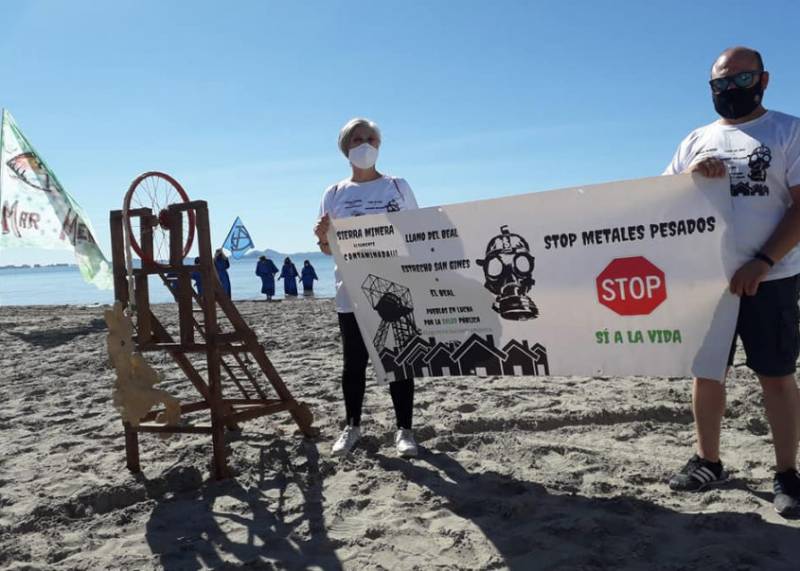 This is a story which goes back thousands of years: one of the reasons that the Romans considered the conquest of Cartagena to be so important some 200 years before the birth of Christ was the mineral wealth of the mountains now known as the Sierra Minera, which stand just south of the Mar Menor. Before the Romans arrived in the third century BC the area had already been mined for silver, lead, zinc, iron and copper by the Iberians and the Phoenicians, but it was as part of the Roman Empire that this became a major industry.
This is a story which goes back thousands of years: one of the reasons that the Romans considered the conquest of Cartagena to be so important some 200 years before the birth of Christ was the mineral wealth of the mountains now known as the Sierra Minera, which stand just south of the Mar Menor. Before the Romans arrived in the third century BC the area had already been mined for silver, lead, zinc, iron and copper by the Iberians and the Phoenicians, but it was as part of the Roman Empire that this became a major industry.
Around 2,000 years ago the Greek writer Strabo reported that there were 40,000 people (mainly slaves, it has to be assumed) working in the mines of Sierra Minera, and this source of prosperity brought more people to the area. The metals extracted were exported all over the Empire, but the Romans left open-cast mines which allowed remaining minerals and metals to be washed down by rainwater towards the Mediterranean to the south and the Mar Menor to the north.
These substances included heavy metals such as arsenic, lead, cadmium, manganese, zinc and others, and when more open-cast mining was undertaken in 1957 it was on a scale which dwarfed the operations of the Romans: in just 30 years 360 million tons of rocks were shifted.
While the dramatic infill of the bay of Portmán – a natural harbour on the Mediterranean coast which was used by the Romans before it became a dumping ground for sterile substances in the 20th century – has long been a cause for concern, the situation on the northern face of the mountains grabbed less of the limelight. The mining stopped in 1990 and since then no more steriles have accumulated in Portmán – although a scheme to partly recover the bay has frustratingly stalled – but the “rambla” runoff channels on the north-facing slopes of the Sierra Minera continue to carry harmful substances downhill to the Campo de Cartagena and then into the Mar Menor even today.
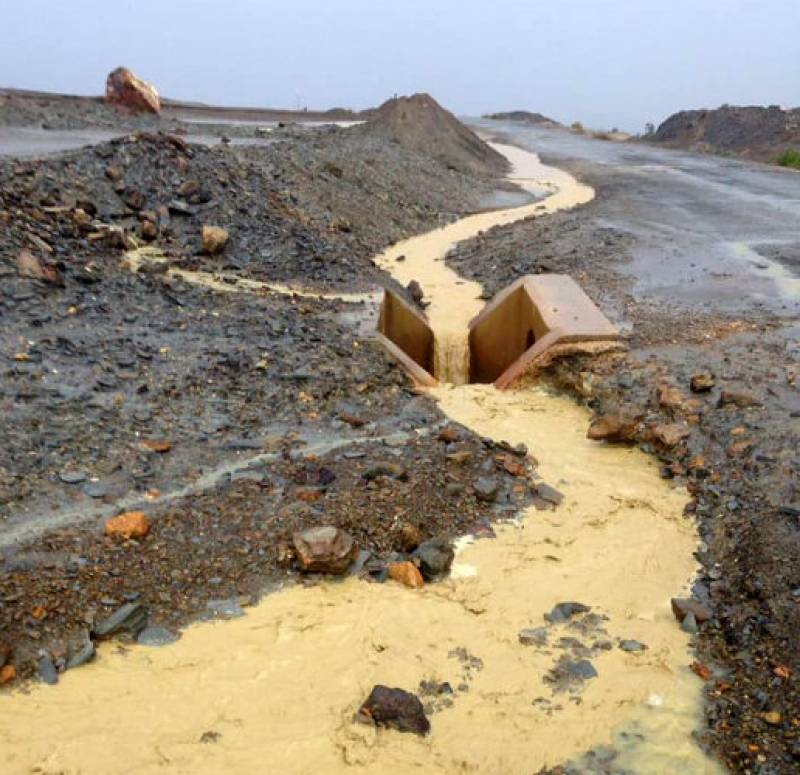 Thus, the Rambla de Las Matildes reaches Los Urrutias on the shore of the Mar Menor, the Rambla del Beal reaches Lo Poyo, the Rambla de Ponce carries water to Los Nietos and the Rambla de La Carrasquilla leads to Islas Menores.
Thus, the Rambla de Las Matildes reaches Los Urrutias on the shore of the Mar Menor, the Rambla del Beal reaches Lo Poyo, the Rambla de Ponce carries water to Los Nietos and the Rambla de La Carrasquilla leads to Islas Menores.
The results will surprise many people: as the rate of sedimentation has accelerated in the Mar from about 4 centimetres per century in the past to 30 cm during the 20th century, the amount of metal and steriles in the lagoon has risen by so much that the Mar Menor is considered by at least one geologist to be an area of mining interest in its own right!
The implications of this are very serious indeed. A study performed by the Universidad de Cartagena in 2004 concluded that an average kilogram of soil reaching the Mar Menor via the Rambla del Beal contains 77 mg of cadmium, 16.8 mg of lead and 725 mg of arsenic, and the Plataforma de Afectados por Metales Pesados estimates that a heavy storm can result in 500 tons of earth following that route to the lagoon.
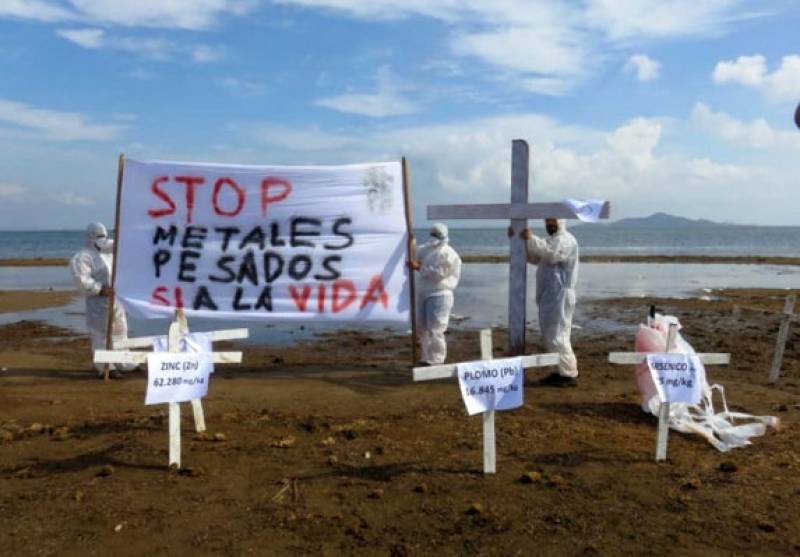 It is now generally accepted that residents in the area are exposed to high-risk levels of heavy metals, and that something needs to be done about the continuing leakage of harmful substances from filtering pools such as the one known as “Balsa Jenny” in El Llano del Beal. Two months ago the courts of Cartagena issued an order for the pond to be sealed off, and now the regional government has sent in machinery as work starts at last to at least partially solve the problem.
It is now generally accepted that residents in the area are exposed to high-risk levels of heavy metals, and that something needs to be done about the continuing leakage of harmful substances from filtering pools such as the one known as “Balsa Jenny” in El Llano del Beal. Two months ago the courts of Cartagena issued an order for the pond to be sealed off, and now the regional government has sent in machinery as work starts at last to at least partially solve the problem.
It is anticipated that the work now being undertaken at a cost of 800,000 euros will prevent run-off during episodes of heavy rain like the one which hit the Region of Murcia in March and April of this year, although at the same time the solution is unfortunately just a temporary one. The government still has on its “to do” list the job of sealing off the pond completely and restoring the terrain to its natural condition, a project which is already four years behind schedule and for which no completion date has even been set.
This latest action comes after years of campaigning, particularly by Ecologistas en Acción and the Plataforma de Afectados por los Metales Pesados de la Sierra Minera de Cartagena y La Unión, and these groups welcome the move, which follows confirmation from the CHS water authority that the run-off from Balsa Jenny contains toxic and dangerous substances such as aluminium hydroxide, cadmium, zinc and lead. Similar action should theoretically be taken on a neighbouring plot of land belonging to the company Portmán Golf, but they have launched an appeal against the court order.
Water quality in the Mar Menor
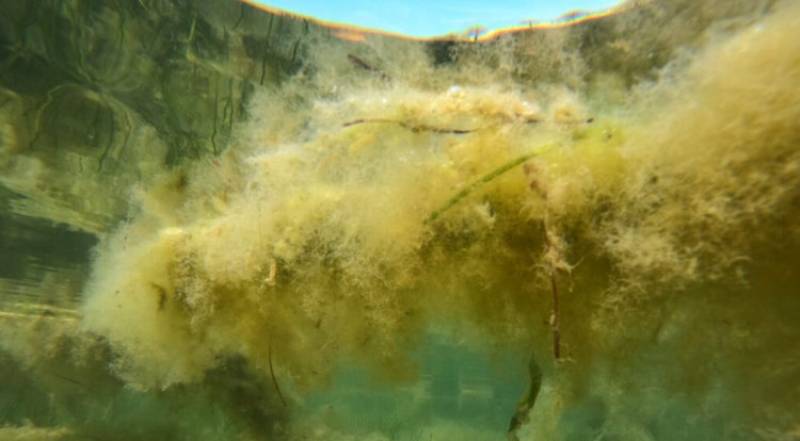 Meanwhile, the water quality measurements in the Mar Menor continue to make grim reading and are not likely to improve in the hot summer weather. The average turbidity reading is four times higher than a year ago, transparency is minimal and the level of chlorophyll in the water is around 70 per cent higher than at the start of June 2021. This reflects the algal bloom which is once again giving the water a greenish hue.
Meanwhile, the water quality measurements in the Mar Menor continue to make grim reading and are not likely to improve in the hot summer weather. The average turbidity reading is four times higher than a year ago, transparency is minimal and the level of chlorophyll in the water is around 70 per cent higher than at the start of June 2021. This reflects the algal bloom which is once again giving the water a greenish hue.
At the same time, the level of salinity in the lagoon is now at 39.2 Practical Salinity Units as opposed to 41 a year ago, and the amount of salt present is closer to that of the Mediterranean than the normal figures associated with the Mar Menor (around 45).
Tons of biomass are being removed from the sea and the shore, but for the sixth consecutive year no Blue Flags have been awarded to Mar Menor beaches.
Images: Afectados Metales Pesados Facebook, ANSE
Sign up for the Spanish News Today Editors Roundup Weekly Bulletin and get an email with all the week’s news straight to your inbox
Special offer: Subscribe now for 25% off (36.95 euros for 48 Bulletins)
OR
you can sign up to our FREE weekly roundup!
Read some of our recent bulletins:
Discount Special Offer subscription:
36.95€ for 48 Editor’s Weekly News Roundup bulletins!
Please CLICK THE BUTTON to subscribe.
(List price 3 months 12 Bulletins)
Read more stories from around Spain:
Cartagena
El Carmoli
Islas Menores and Mar de Cristal
La Manga Club
La Manga del Mar Menor
La Puebla
La Torre Golf Resort
La Union
Los Alcazares
Los Belones
Los Nietos
Los Urrutias
Mar Menor Golf Resort
Pilar de la Horadada
Playa Honda / Playa Paraiso
Portman
Roldan and Lo Ferro
San Javier
San Pedro del Pinatar
Santa Rosalia Lake and Life resort
Terrazas de la Torre Golf Resort
Torre Pacheco
Aledo
Alhama de Murcia
Bolnuevo
Camposol
Condado de Alhama
Fuente Alamo
Hacienda del Alamo Golf Resort
Lorca
Mazarron
Puerto de Mazarron
Puerto Lumbreras
Sierra Espuna
Totana
Abaran
Alcantarilla
Archena
Blanca
Corvera
El Valle Golf Resort
Hacienda Riquelme Golf Resort
Lorqui
Molina de Segura
Mosa Trajectum
Murcia City
Peraleja Golf Resort
Ricote
Sucina
Condado de Alhama
El Valle Golf Resort
Hacienda del Alamo Golf Resort
Hacienda Riquelme Golf Resort
Islas Menores and Mar de Cristal
La Manga Club
La Torre Golf Resort
Mar Menor Golf Resort
Mazarron Country Club
Mosa Trajectum
Peraleja Golf Resort
Santa Rosalia Lake and Life resort
Terrazas de la Torre Golf Resort
La Zenia
Lomas de Cabo Roig

CAMPOSOL TODAY Whats OnCartagena SpainCoronavirusCorvera Airport MurciaMurcia Gota Fria 2019Murcia property news generic threadWeekly Bulletin
























